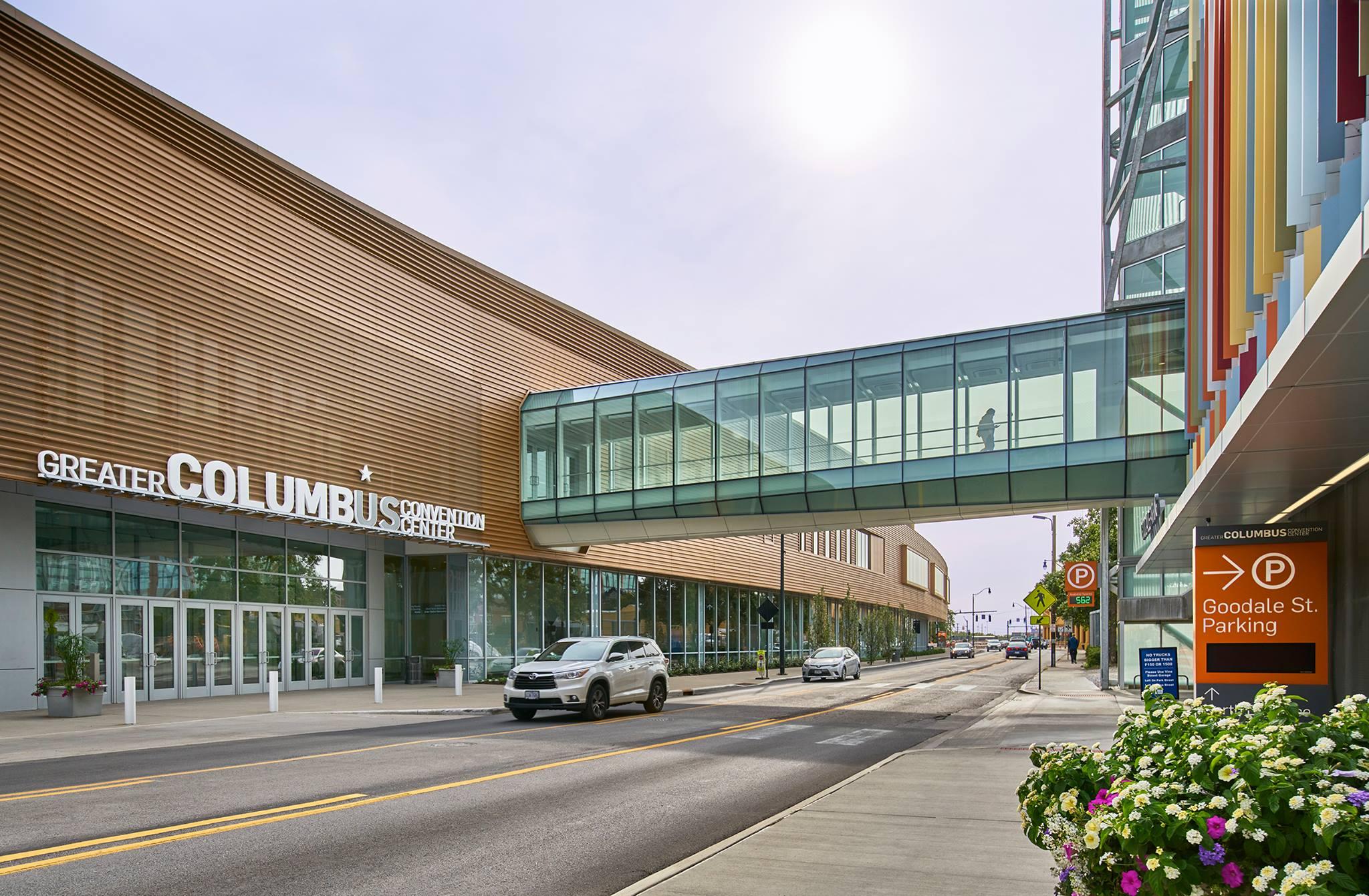

“There was an extensive retrofit to add meeting rooms,” says Bevans, “but the foundry workshops were fairly easy to convert – just some rewiring, pouring concrete floors, adding floor boxes, HVAC, and all the modern conveniences. Architects and planners were determined to maintain as much of the building’s physical attributes as possible, while still creating a contemporary facility for meetings, conferences, conventions, and other events. In 1977, the city began converting the Iron Works with $8 million in funds provided by a local beverage tax and federal grant money. “The Bradley Company moved its operation to a new plant on the other side of town and sold this site to the City of Columbus, which decided to repurpose the building as a convention center.”

“It shut down in the early ‘70s,” says Bevans. It sold its first “Charbroil” grill in 1953. Starting in the late 1940s, the company experimented with barbeque grills. Bradley Company acquired control of the Columbus Iron Works and attempted to concentrate on fewer, more marketable items such as stoves and heaters in the 1920s, tractor-drawn implements following World War II, and forged parts for other manufacturers in the 1950s. Undaunted by this second destruction, the owners built the massive, new facility which remained unchanged for sixty-five years. Within the two block complex, only the 1890s foundry survived. On April 11, 1902, the Works burned down again. By 1880, Columbus led the South in textile production, and many of the spindles and looms in its mills were driven by shafts and pulleys provided by the Columbus Iron Works. National Register of Historic Places in 1969, and today is the City of Columbus’ main, municipal event center.īuilt in 1853, the Columbus Iron Works was already manufacturing a wide variety of merchandise, including kettles and ovens, brass castings, cast-iron columns and store fronts, sugar, grist, and saw mills, and steam engines to power those mills, as well as the South’s cotton gins and riverboats, when it was called upon to provide cannons and steam engines for the Confederate Army at the start of the Civil War.īurned by the Union army at war’s end, the Iron Works’ stockholders rebuilt and expanded the facility, eventually turning it into the city’s largest and most sophisticated foundry. “Architecturally, there’s nothing close to the experience that people get in here.” By all accounts, Bevans is not exaggerating when he espouses one of the main selling points of the historic and culturally significant building that began as the Columbus Iron Works, became listed on the U.S. “It’s a very unique space,” declares David Bevans, the Executive Director of the Columbus Georgia Convention & Trade Center. The Columbus Georgia Convention & Trade Center An old building houses a new businessīusiness View Magazine profiles The Columbus Georgia Convention & Trade Center, the City of Columbus’ main, municipal event center.


 0 kommentar(er)
0 kommentar(er)
